West Bali National Park offers a captivating blend of underwater and terrestrial adventures. Visitors can explore the vibrant coral reefs of Menjangan Island, teeming with diverse marine life, while trekking through lush monsoon and mangrove forests reveals unique wildlife encounters. Whether you’re a nature enthusiast or an adventure seeker, this destination promises an unforgettable experience. From accessible zoning to world-class snorkeling and culture, the park’s diverse ecosystems and activities await those seeking to uncover its hidden gems.
Key Points
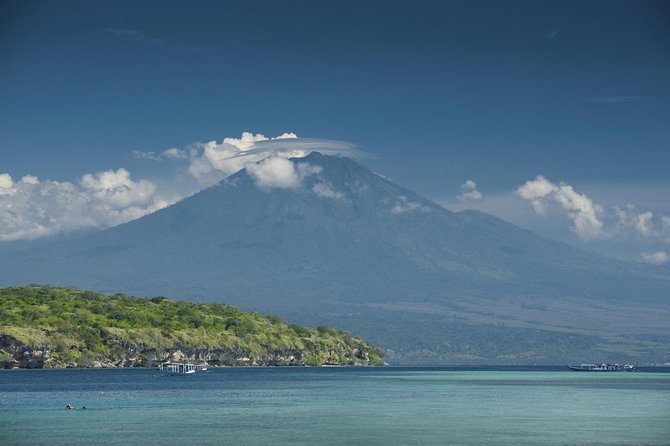
- West Bali National Park offers diverse ecosystems, including primary monsoon forests, mangrove forests, and coral reefs, supporting a rich array of flora and fauna.
- The Prapat Agung peninsula within the park provides accessible wildlife observation opportunities, with sightings of barking deer, monkeys, and wild pigs.
- Menjangan Island, within the park, is renowned for its vibrant coral reefs and diverse marine life, making it a popular snorkeling destination.
- Visitors can explore local temples by private boat, experiencing the cultural significance of sites like Gili Kencana, Segara Giri, and Kelenting Sari.
- Jungle trekking in the park offers panoramic views, opportunities to spot wildlife like monitor lizards and birds, and the chance to traverse unique mangrove forests.
Diverse Ecosystems of West Bali National Park
West Bali National Park boasts a remarkable diversity of ecosystems, from primary monsoon forests to mangrove forests, lowland rainforests, savannas, seagrass meadows, coral reefs, sandy beaches, and a vast expanse of shallow and deep sea waters.
Covering a total area of over 19,000 hectares, the park’s varied landscapes support a rich array of flora and fauna.
One of the park’s most accessible areas is the Prapat Agung peninsula, home to species like barking deer, green monkeys, black monkeys, wild pigs, and numerous bird species.
Separated from the rest of the reserve by the Singaraja-Gilamanuk road and forestry plantations, the park’s diverse ecosystems make it a true natural wonder.
Ready to hit more trails? More hiking adventures we feature in Ubud
Accessible Zoning and Prapat Agung Peninsula
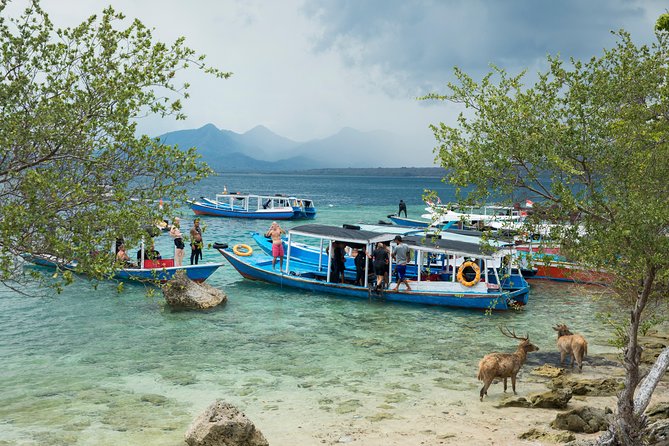
The park’s diverse ecosystems are accessible through a zoning system that regulates activities within its boundaries. This system allows visitors to explore the park’s varied habitats while minimizing impact.
The Prapat Agung peninsula is the most accessible area, home to a wealth of wildlife like barking deer, green monkeys, black monkeys, wild pigs, and many bird species.
Separated from the rest of the reserve by the Singaraja-Gilamanuk road and forestry plantations in Teluk Terima, this peninsula offers a unique opportunity to observe the park’s natural inhabitants in their natural environment.
World-Class Snorkeling at Menjangan Island
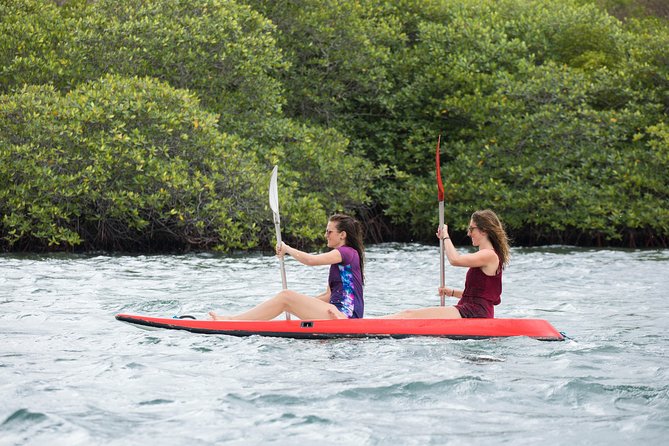
After exploring the lush terrestrial ecosystems of West Bali National Park, visitors often venture to Menjangan Island, renowned for its world-class snorkeling opportunities. This picturesque island boasts vibrant coral reefs teeming with diverse marine life. Snorkelers can expect to encounter electric clams, scorpion fish, starfish, eels, and large reef fish. The tour includes a boat ride from Banyuwedang Beach and guided snorkeling, allowing guests to fully enjoy the underwater wonders. For those seeking a more private experience, the tour also offers the option to visit local temples, such as Gili Kencana, Segara Giri, and Kelenting Sari.
| Snorkeling Experience | Marine Life | Additional Offerings |
|---|---|---|
| Guided snorkeling | Electric clams | Boat ride to island |
| Vibrant coral reefs | Scorpion fish | Temple visits |
| Diverse underwater life | Starfish, eels, reef fish | Private options |
Boat Ride and Underwater Exploration
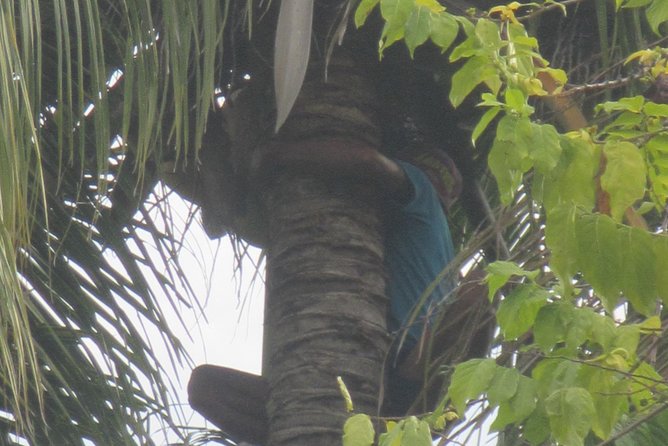
Embarking on the journey to Menjangan Island, visitors eagerly board the boat at Banyuwedang Beach. The short ride across the calm waters offers glimpses of the lush, forested coastline.
Upon arrival, the guided snorkeling experience begins, providing an up-close encounter with the vibrant coral reefs. Underwater, electric clams, scorpion fish, starfish, eels, and large reef fish captivate the senses. Experienced snorkelers can venture further, exploring the diverse marine life in deeper sections.
For those seeking a more immersive experience, the tour also includes options to visit nearby temples on Gili Kencana, Segara Giri, and Kelenting Sari. The boat ride and underwater exploration combine to offer a truly memorable experience at Menjangan Island.
Visiting Local Temples by Private Boat
For visitors seeking a more immersive cultural experience, the tour offers private boat options to explore local temples around Menjangan Island. These temples provide a glimpse into the island’s rich spiritual heritage. The tour includes visits to:
| Temple | Description |
|---|---|
| Gili Kencana Temple | A Hindu sea temple located on a small island |
| Segara Giri Temple | A temple dedicated to the sea goddess Dewi Sri |
| Kelenting Sari Temple | A temple complex with shrines and Buddhist influences |
Travelers can disembark at these sites, wander the grounds, and learn about the cultural significance of each temple from the knowledgeable tour guide. This option allows for a more personalized and immersive exploration of West Bali’s cultural treasures.
Ready to dive back in? More underwater adventures we cover in Ubud
- Bali Snorkeling at Blue Lagoon With Transport and Lunch
- Bali Snorkeling at Blue Lagoon With Lunch And Private Transport
- Blue Lagoon Snorkeling and Lunch – Kanto Lampo – Tibumana Waterfall-All Included
- Blue Lagoon Snorkeling – Lunch – Kantolampo – Tibumana Waterfall
- Blue Lagoon Snorkeling and Lunch – Kanto Lampo – Suwat Waterfall – All Inclusive
- All Inclusive: ATV – Quad Ride and Bali Blue Lagoon Snorkeling
Jungle Trekking and Panoramic Views
Jungle trekking begins at the Jayaprana & Layon Sari temple complex, a site steeped in a captivating love story. This immersive experience allows visitors to explore the park’s diverse monsoon forest, identify a variety of herbal plants, and enjoy panoramic views of the surrounding landscape.
The trek also includes a passage through a mangrove forest before returning to the starting point. Along the way, trekkers may spot intriguing wildlife such as monitor lizards, wild chickens, birds, and monkeys. The trekking experience offers a unique opportunity to connect with nature and gain a deeper appreciation for the park’s rich biodiversity.
Key features of the jungle trekking experience:
- Exploration of the monsoon forest
- Identification of herbal plants
- Panoramic views of the surrounding landscape
- Passage through a mangrove forest
Wildlife Sightings and Mangrove Forest
The trekking experience through West Bali National Park offers ample opportunities to spot captivating wildlife.
Along the trail, visitors may encounter monitor lizards scurrying across the forest floor or catch glimpses of wild chickens pecking at the undergrowth.
Birdwatchers can delight in observing a variety of species flitting through the trees, from vibrant-hued kingfishers to majestic birds of prey.
The trek also traverses a serene mangrove forest, providing a chance to witness the unique ecosystem and its inhabitants, such as crabs and small fish.
These diverse wildlife encounters add to the enchantment of exploring the park’s lush, primeval landscape.
Tour Logistics and Traveler Feedback
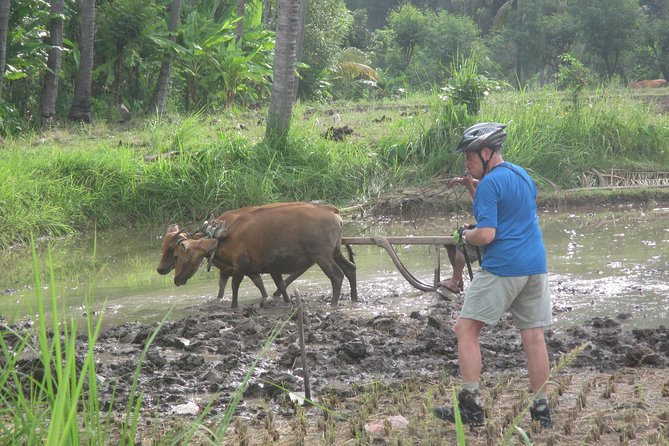
When visiting West Bali National Park, the tour logistics are well-organized to provide a seamless experience for travelers. The tour includes land transportation from Pemuteran and Pejarakan Village to Banyuwedang Beach and back.
Travelers are also provided with additional provisions like binoculars, bottled water, and soft drinks, as well as an English-speaking guide.
The maximum group size is limited to 100 travelers, ensuring an intimate and personalized experience. Plus, the tour isn’t wheelchair accessible and isn’t recommended for individuals with serious medical conditions.
The park has received positive reviews from travelers, with an average rating of 4.5 stars. Reviewers have highlighted the stunning snorkeling experience at Menjangan Island and the chance to see unique wildlife, including deer fights.
Frequently Asked Questions
What Is the Best Time of Year to Visit the Park?
The best time to visit West Bali National Park is during the dry season, from April to September, when the weather’s dry and the chances of spotting wildlife are higher. Conditions are ideal for snorkeling and trekking activities.
Are There Any Age or Physical Fitness Requirements for the Activities?
The park’s activities don’t have strict age or fitness requirements, but the treks involve moderate hiking. Travelers should be able to walk on uneven terrain. Young children and those with medical conditions may need special accommodations.
What Should Travelers Bring Besides the Recommended Items?
Travelers should bring their own snorkeling or diving gear if they have personal preferences. Sun protection like hats, sunscreen, and lightweight breathable clothing are also recommended for the trekking portion of the tour.
Is It Possible to Arrange Private Tours or Customize the Itinerary?
Yes, private boat options are available for Menjangan Island visits, allowing travelers to customize the itinerary and visit local temples. The tour provider can also accommodate special requests within the park’s zoning regulations.
How Can Travelers Minimize Their Environmental Impact During the Visit?
Travelers can minimize their environmental impact by staying on designated paths, avoiding disturbing wildlife, properly disposing of waste, and choosing eco-friendly tour operators committed to sustainable practices. Using refillable water bottles and reef-safe sunscreen also helps protect the delicate ecosystems.
Recap
West Bali National Park offers a remarkable fusion of land and sea adventures. Snorkeling amid the vibrant coral reefs of Menjangan Island and trekking through the park’s lush forests provide an exceptional opportunity to take in the region’s diverse ecosystems. This combination of activities makes for an unforgettable experience for nature enthusiasts seeking a unique blend of underwater and terrestrial exploration.
More Snorkeling Tours in Ubud
- Blue Lagoon Snorkeling and Lunch With Tukad Cepung Waterfall
- Manta Point Snorkeling & West Nusa Penida Island Day Tour
- Nusa Penida Tour and Private Snorkelling at Manta, Gamat, Wall
- Bali Nusa Penida Land Tour and Private Snorkeling – All Inclusive
- From Bali One Day Nusa Penida Tours With Manta Rays Snorkeling
- Nusa Penida West Tour With 3 Spots Snorkeling (All-Inclusive)
More Hiking & Trekking Tours in Ubud
More Tour Reviews in Ubud
Not for you? Here's more things to do in Ubud we have recnetly reviewed
- 8 Best 2 Day Tours In Ubud
- 10 Best 3 Day Tours In Ubud
- 8 Best Food Tours In Ubud
- 20 Best Full-Day Tours In Ubud
- Best 4 Day Tours In Ubud
- 25 Best Lunch Experiences In Ubud
- 20 Best Massage And Relaxation Services In Ubud
- 20 Best Photography Experiences In Ubud
- 16 Best Dining Experiences In Ubud
- 17 Best Coffee Tours And Tastings In Ubud
- 13 Best Dinner Tours In Ubud
- Bali Premier Paintball Game Adventure by Pertiwi Adventure
